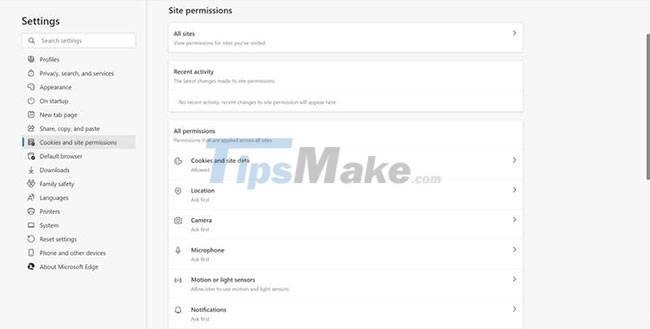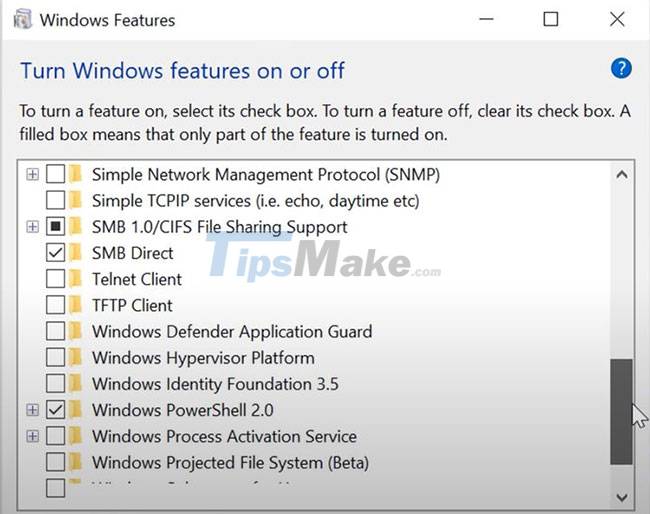Steps to adjust security settings in Microsoft Edge
So how can you reconfigure Edge to make your online browsing experience more secure?
1. Microsoft Defender SmartScreen in Edge
Many of the security features in Microsoft Edge work in tandem with Windows' built-in antivirus solution, Microsoft Defender.
Chances are you've seen Microsoft Defender SmartScreen in action. It is basically a filter that prevents users from accessing untrusted or malicious websites. It also warns users when they download potentially malicious files from the Internet.
SmartScreen cross-checks websites and files with Microsoft's database for known threats. If a file has been downloaded enough times and is not reported by users or flagged by Microsoft Defender, the file is considered safe.
The functionality of Microsoft Defender SmartScreen is not limited to Edge. It is also integrated at the operating system level and works with the Microsoft Store.
How to bypass SmartScreen to visit incorrectly flagged websites
There may be cases where SmartScreen blocks incorrect websites. If you're sure a website is safe, you can still visit it, although Microsoft doesn't recommend it.

Step 1: On the Windows Defender SmartScreen prompt in Edge, click More information.
Step 2: Now, click Continue to the unsafe site (not recommended) option .
Step 3: The website will open as usual.
Alternatively, you can also report to Microsoft that the site has been flagged incorrectly.
How to enable or disable Microsoft Defender SmartScreen
Microsoft Defender SmartScreen is always on by default, but you can choose to turn this setting on or off. You should leave it on, but if for some reason you need to disable the feature, you can do so by following these steps:

Step 1: Open Microsoft Edge and click on the three dots in the top right corner of the screen.
Step 2: In the drop-down menu, click Settings.
Step 3: Now, from the left navigation bar, click on Privacy, search, and services . It can be recognized by a lock icon next to it.
Step 4: Scroll down until you find the Security section .
Step 5: Use the toggle switch next to Microsoft Defender SmartScreen to enable or disable this feature.
2. Manage Website Access in Edge
Like all other browsers, you can manage how much access you give certain websites in Microsoft Edge. This includes settings like GPS access, microphone and webcam access.
Normally, whenever you visit a website, it asks for the associated permissions. But these settings can be managed later and some access rights can be disabled without affecting the functionality of the website.
For example, some online meeting sites may request access to your location, although it is not necessary.
How to Control Website Access in Microsoft Edge

Step 1: Click the three dots in the top right corner of Microsoft Edge to open the options menu.
Step 2: Now, click on Settings.
Step 3: In the navigation bar on the left, click Cookies and site permissions .
Step 4: Under Site Permissions > All permissions , you can change the general settings for all the websites you visit.
Step 5: If you want to change the settings for specific sites, click All sites under Site Permissions.
It's important to note that when using incognito browsing in Microsoft Edge, your permission settings remain the same, and settings such as location or microphone access may not be automatically blocked.
3. Microsoft Defender Application Guard feature in Edge
If you're using the enterprise edition of Microsoft Windows or Microsoft Edge, you'll get an extra security measure called Application Guard .
Using this feature, business administrators can identify a set of trusted websites and all others that are considered unsafe by Microsoft Edge. Whenever you try to open a website that is not on the list, Edge opens it in a secure sandbox to prevent it from infecting your computer if the site is malicious.
This is a better alternative to block all other websites.
How to enable Application Guard

Step 1: In the Start menu search bar , type "Control Panel" and open it from the search results.
Step 2: Make sure that Control Panel is set to View by: Category , then click Programs.
Step 3: In the Programs window , select Turn Windows features on or off . You will need admin privileges to do so.
Step 4: From the list of features, scroll down until you find Windows Defender Application Guard and click on the corresponding checkbox.
Step 5: Click OK and restart the computer.
4. Manage tracking in Microsoft Edge
Most of the websites you visit use trackers to learn more about your browsing habits. For example, ads for the products you searched for may show up on the websites you visit, thanks to trackers. There are many ways to check if someone is following you online.
Sometimes, malicious trackers injected into your computer can cause a lot of harm if left undetected. Fortunately, Microsoft Edge allows you to block certain trackers or block them all.
How to block trackers in Microsoft Edge

Step 1: Launch Microsoft Edge and open the options menu using the three dots in the top right corner.
Step 2: Click Settings. In the navigation bar on the left, select Privacy, search, and services .
Step 3: Under Tracking Prevention , make sure it's turned on. You can choose from three modes: Basic, Balanced and Strict .
Step 4: To add exceptions and allow trackers from certain websites, add them using the Exceptions option .
Step 5: To see blocked trackers and know the websites that sent them, click on the Blocked trackers option .
In addition, you can also enable the option Send "Do Not Track" requests to enhance privacy and security while browsing the web.
Setting tracking to Strict will result in a less personalized experience. In some cases, you may also lose a bit of functionality in certain websites.
You should read it
- How to color PDF documents on Microsoft Edge
- Fix Microsoft Edge using RAM on Windows 10
- How to customize privacy settings on Edge browser Windows 10?
- Microsoft Edge has more features to help limit zero-day exploits
- Google: 'If you want to use secure extensions, don't use Microsoft Edge'
- Microsoft Edge is about to integrate YouTube with the Discover feature, promising many interesting experiences
 Google Chrome has an urgent update, patching a serious zero-day vulnerability being exploited by hackers
Google Chrome has an urgent update, patching a serious zero-day vulnerability being exploited by hackers TOP 12 light web browsers, the least resource consuming for computers
TOP 12 light web browsers, the least resource consuming for computers How to view saved credit card numbers in Safari on iPhone, iPad
How to view saved credit card numbers in Safari on iPhone, iPad Chrome will scan for risky files on demand, telling you which extensions to trust
Chrome will scan for risky files on demand, telling you which extensions to trust Steps to fix the 'Download Failed Network Error' error on Chrome
Steps to fix the 'Download Failed Network Error' error on Chrome How to change colors and themes in Chrome
How to change colors and themes in Chrome